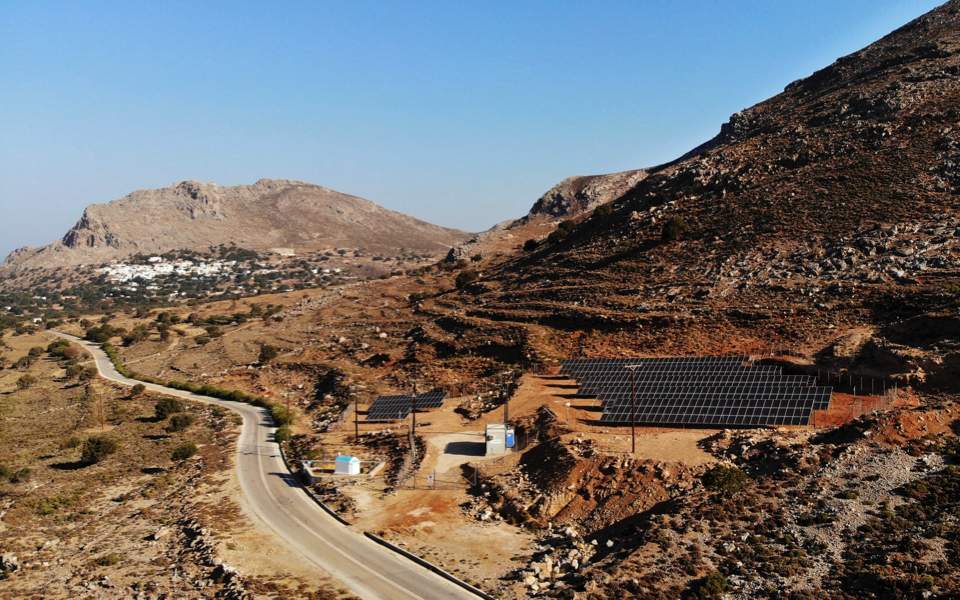The remote Greek island of Tilos is home to quiet beaches, picturesque villages, and historic churches — not to fossil-fuel burning power plants. So until recently, Tilos imported most of its energy.
Dimitris Zafirakis of the University of West Attica says electricity traveled from a diesel power plant on the island of Kos through an undersea cable.
“That went from Kos to the island of Nisiros and then from Nisiros to the island of Tilos,” he says.
Blackouts were common, especially in the summer tourist season, when demand for electricity was high.
So in 2017, Tilos installed a new energy system powered by locally generated renewables.
Zafirakis coordinated the project, which was funded by the European Union. The system includes a wind turbine, solar array, and two large batteries that can store excess energy for times when it’s needed.
The system supplies 60-70% of the island’s power on average. And during the winter, it generates excess energy that can be exported back to the other islands.
Zafirakis says it demonstrates the potential of this approach. Renewables and battery storage could help other remote communities secure an independent, reliable energy supply.

